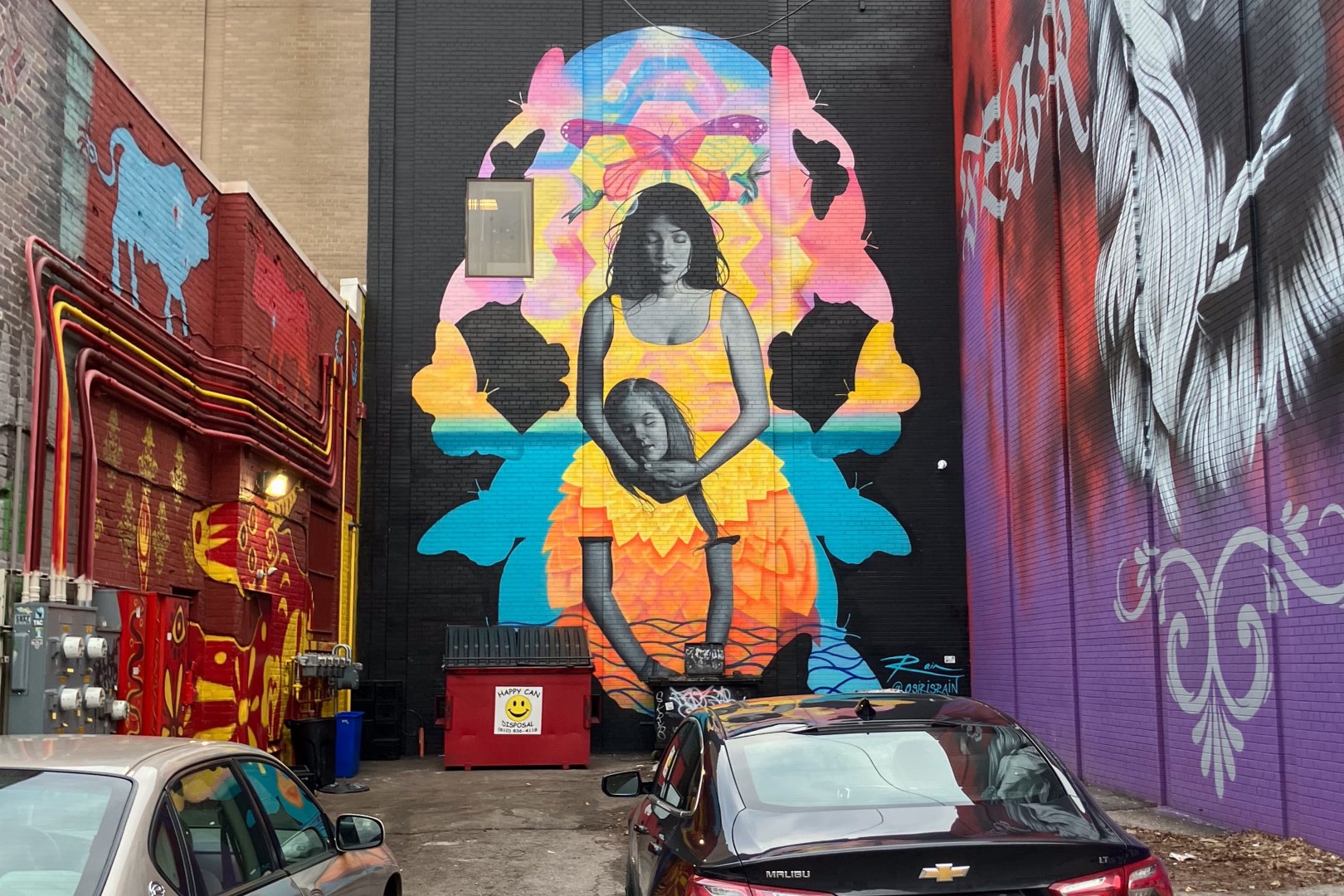
FLINT — Steven Barber has something flattering to say about every mural and building downtown.
“On the side of the walls is a group of artists from New Orleans, and then the one on the face of that building - I think that's a ‘Houzenga’... and then there’s one on the other side. I want to say that one’s “Phybr.” Then actually Woodside Church over there, that was originally Hoffman’s Deco Deli, which is down the street from here.”
But as he made his way south on Saginaw Street toward an empty intersection at University Avenue, the drivers of two cars got into a rage-fueled honk fight right in front of Barber.
“That is not Flint. Flint is so much better than that,” said the president of the Flint Public Art Project, a non-profit aimed at easing blight by commissioning artists to paint murals around the city.
At age 36, Barber prefers to pop his head into stores and wave at workers he recognizes through the front window because that’s his job: to promote a better story about Flint and its people.
“I think over the years we’ve really tried to break through from the stigma of just being the birthplace of the automobile and General Motors and kind of try to reshape the identity of Flint,” said Barber, who got involved with the community when he started using his drones to document the city’s murals. “With the Flint Public Art Project, with the community, with other art organizations, that has slowly but surely taken place.”
Over the last half century, Flint has developed a reputation as a fairly unpleasant place. From the exodus of General Motors in the ‘80s and ‘90s that left the majority of the city unemployed, to its ranking as the country’s crime capital in the early 2000s, and finally to the water crisis that poisoned residents in 2014, scant good news has come out of this city on a national level.
“I don't know how many cities have had continuous crises over and over again since the 1970s. We've had just incredible bad luck,” said Greg Fielder, president and CEO of the Greater Flint Arts Council, or GFAC.
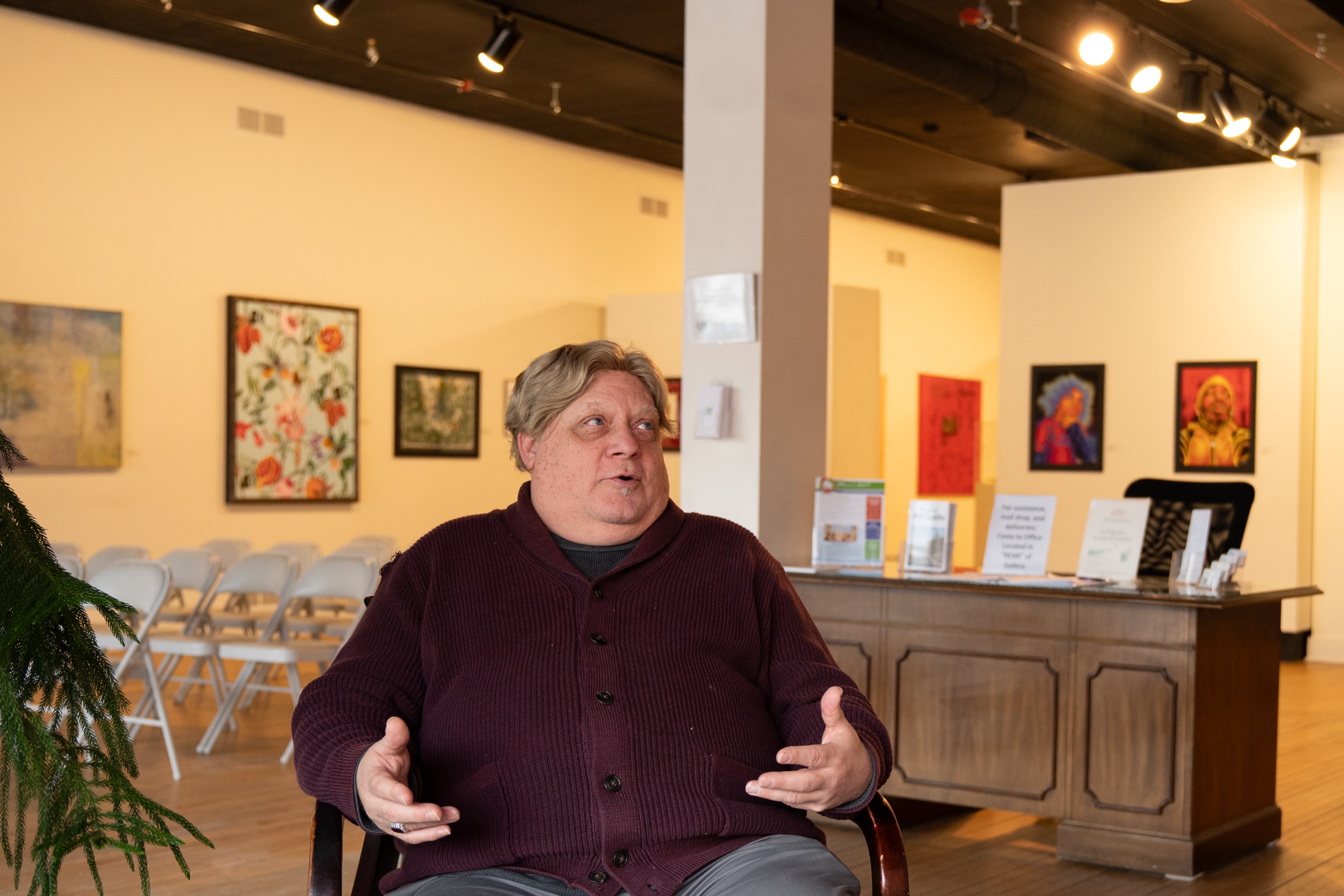
Lesser known are the many positives to the city where about 80,000 people live. One in particular is how Flint has become an incubator for public art in the last 10 years since the water crisis began.
“It gained popularity, because it was the one thing that was able to thrive, and more people got involved in it. I think the whole point of the Flint Public Art Project when it started was to bring in different people and to bring in a different image,” said Chuck Gruden, president of Friends of Modern Art, an organization that puts on the yearly Flint Art Fair, an event that helps to build funds for the acquisition of modern pieces at the Flint Institute of Arts.
Since around 2011, 350 murals have been commissioned by the Flint Public Art Project, with 200 or so still in place today. Among numerous art festivals that happen yearly in the summer, there is the Free City Mural Festival, which officially started in 2018. It pays artists a stipend to come to the city for a week and paint murals, network and engage the community. There is also an open studio known as Art Walk held every second Friday of the month where several galleries downtown stay open late to showcase work and facilitate connection between patrons and local artists.
Sandra Branch, board member for the Flint Public Art Project and director of mural project Gallery on the Go!, was a key art activist during the water crisis. She helped create pieces that called out what was happening to the community at that time while also addressing what needed to change in the city’s narrative.
“It was victimhood. We wanted to escape victimhood. We had been the crime capital, murder capital, the place that everybody ran from… We started by painting different images that would give hope and using colors that are known to cause a chemical reaction in a person’s brain,” said Branch.
The Public Art Project, launched in 2011 by Flint native turned New York business executive Steven Sacks, was funded in part by a $250,000 grant from the National Endowment for the Arts. It became an independent 501(c)(3) nonprofit organization in 2018. Sacks started it because he saw an opportunity for growth, transformation and immense artistic freedom in the city.
“The city of Flint has had a huge issue with blight and abandonment and neglect over the years. One of our goals was to really help alleviate that issue. If a building is going to be abandoned, let’s give it some color so that it’s not an eyesore so much and there’s something that can be appreciated about it,” said Barber.
Flint was the original birthplace of General Motors or GM. It grew in population because of the company’s many factories that, at their peak, employed 80,000 people. In the ‘80s and ‘90s, the auto giant moved most of its factories overseas and closed the ones in Flint. About 8,000 people still work for GM Flint Assembly today, but the city has not attracted another industry or employer to prop it up.
“People started to leave and flight began from the city. People just left their homes open. Didn’t sell them… That’s how we ended up with [so many] abandoned open homes in Flint,” said Branch.
As time went on and the population and economy continued to decline, Flint became known for the high rates of violent crime.
“When I originally moved to Flint in the early ‘80s, the image of it was, there was crime. It was a big city then. It was probably … 175,000 to 200,000 residents. So it was kind of known as, ‘you can go downtown, but you can’t go anywhere else,’ because of all the crime,” said Gruden.
This was and still is a piece of the reputation of Flint. While this was going on, the 2008 recession hit the city hard and on April 25, 2014, the water crisis began, sickening thousands and killing at least 12.
It was at that time that Branch, who started Gallery on the Go! in 2013 to “bring attention to the blight and the abandoned buildings,” became affiliated with the Flint Public Art Project.
“We saw that other people were doing art, art activism, and we decided to collaborate with a lot of them… We got a diversity of voices and projects, just to make sure that the word was out,” said Branch.
Months after the water source was switched in April 2014, residents began to suspect something was wrong with it. Branch and her artist crew that consisted of Michael Cobley, Ryon Gonzalez, who passed away in 2020, and Zeb Molina created a 17- by 12-foot movable mural that was “a visual representation of the frustration of the people.” It featured a large faucet looming over a crumbling city of Flint, with a fire-like silhouette of the state of Michigan in the background.

“I said, ‘Hey, we got to do something. We got to make a mural.’...” said Branch, who noted that this was a better tactic than asking celebrities for help soliciting bottled water donations. “We wanted the problem fixed. We didn't want celebrities coming to get click bait and ‘look what I've done. I brought bottled water to Flint people.’ No. That made us bigger victims.”
Instead, they created a mural, which was a four-panel faucet that they moved around as a protest when attorneys and city and state officials were in town during the water crisis.
“We moved around from site to site to bring attention to the water crisis, and then we had it at a water distribution site where we were giving away free water,” said Branch.
In 2016, Branch and her crew of artists created two other murals on a building in the north side of Flint. One wall featured a bus full of cartoon characters including a figure squirting Gov. Rick Snyder with a water gun. It read “The water crisis through the eyes of a child.”
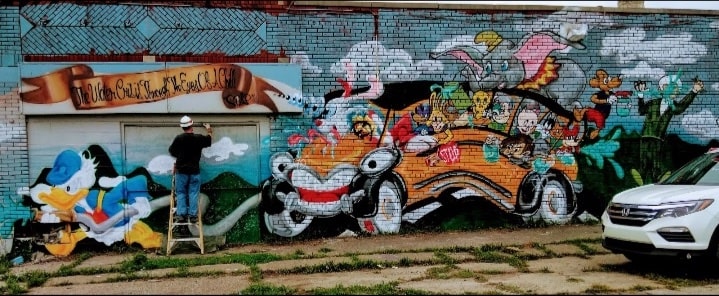
On the left side of the piece, Donald Duck is featured holding a hose and squirting water at a mural of President Barack Obama. This second piece, painted by local Flint artist Kevin Burdick or “Scraps,” featured Amariyanna Copeny or “Little Miss Flint,” a young girl made famous from the letter she wrote to Obama asking him for help. Obama visited and, on camera, took a sip from a glass of water.
“He drank the water and said it was OK, when it wasn’t,” said Branch. “We didn't really want to slam him hard, but we did want to let him know, people to know, that we were displeased. We didn't believe that. That was more bureaucracy and lies. It seems like that's what the government does. They gaslight us,” said Branch.
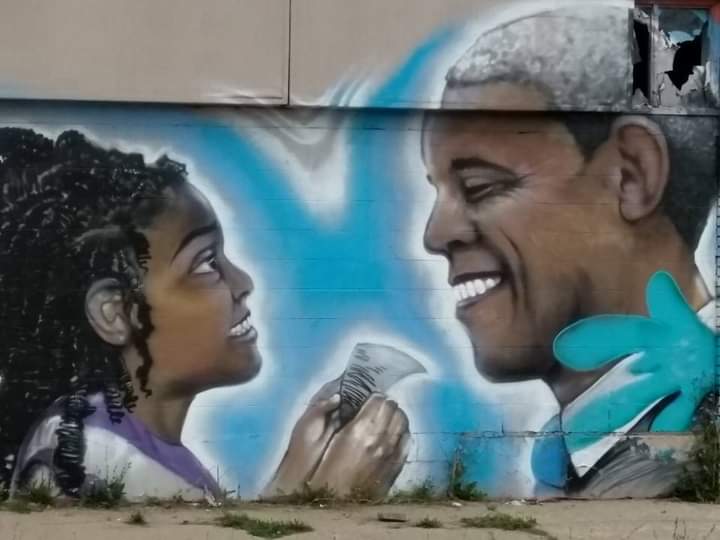
While crisis and chaos often serve as the muse for artists looking to mark history through creative expression, other local artists chose to turn away from Flint’s signature bad luck for their inspiration.
“I know art has been used for centuries as a stop in time, so to speak,” said Aphonso Foster, a lifelong Flint resident, sand and snow sculptor and fine arts painter. “There's always something that shows what was going on at that time. Renaissance, wars, what have you… But this water crisis wasn’t a real good art thing.”
He uses oil paint and oil pastel for many of his pieces and portraits and has painted a number of murals around the city, some with Laverne Ross, a self-taught muralist from Flint who died August 2024.
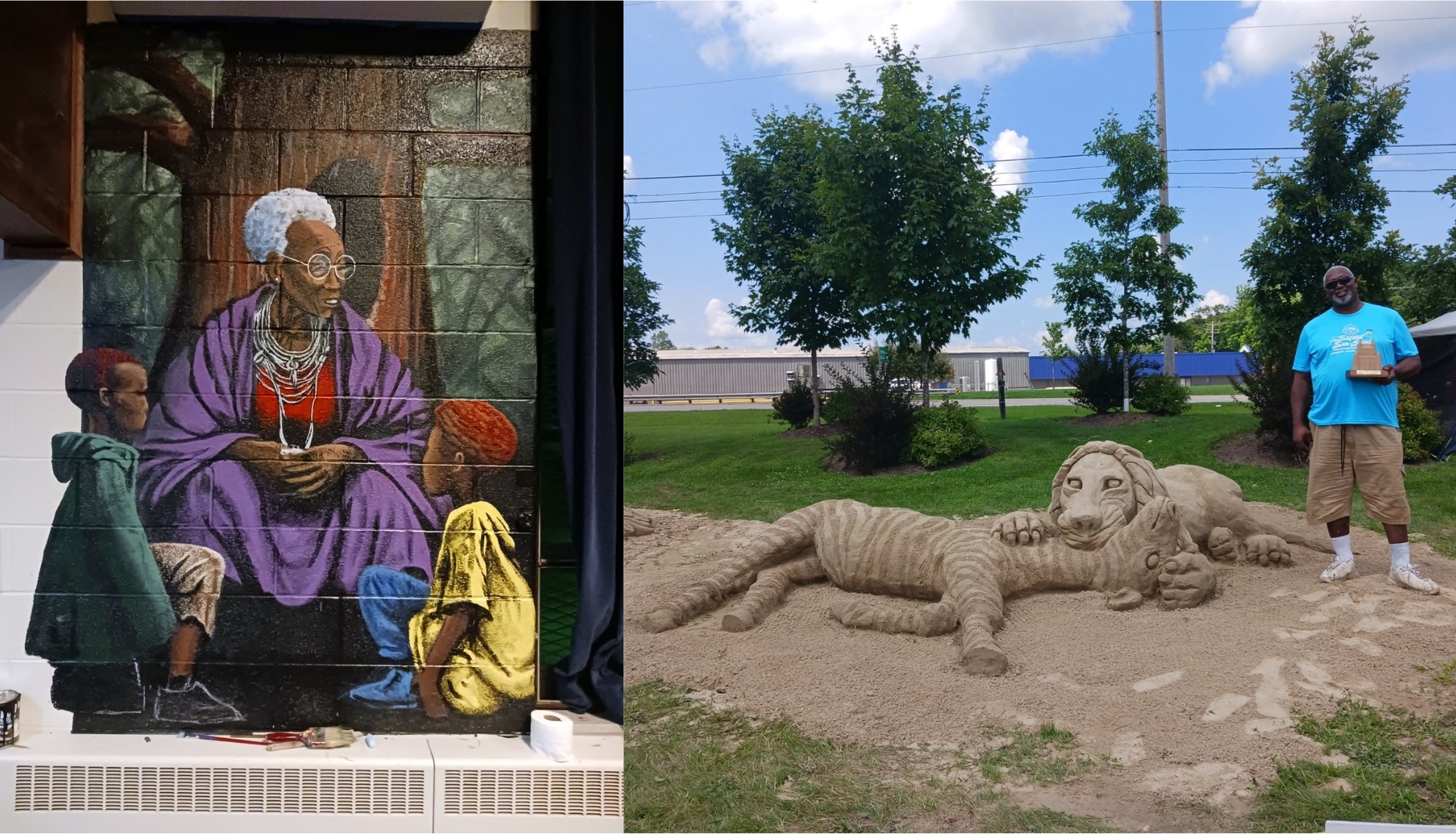
Foster strays from outlining the bleakness of Flint in his work and never felt driven to highlight his frustrations with the water crisis.
“It was enough articles about it. It was just such a negative thing … we didn’t really highlight it like, ‘oh, this is an opportunity to throw out some great paintings,’” said Foster.
After the initial years of the water crisis, the Flint Public Art Project, too, continued to evolve its message.
“We shifted to clean water,” said Branch, and “all that that brings... which is clean waterways, fresher food and less poisoned gardens.”
Burdick or “Scraps” is a muralist who also does just that. Many of his pieces, which he has done all around Michigan, feature fish, aquatic birds and the nature found in the state.
One massive mural he completed next to the Capitol Theatre off of Saginaw Street features a Sandhill crane flying just above the water with a pinkish, sunset hue.
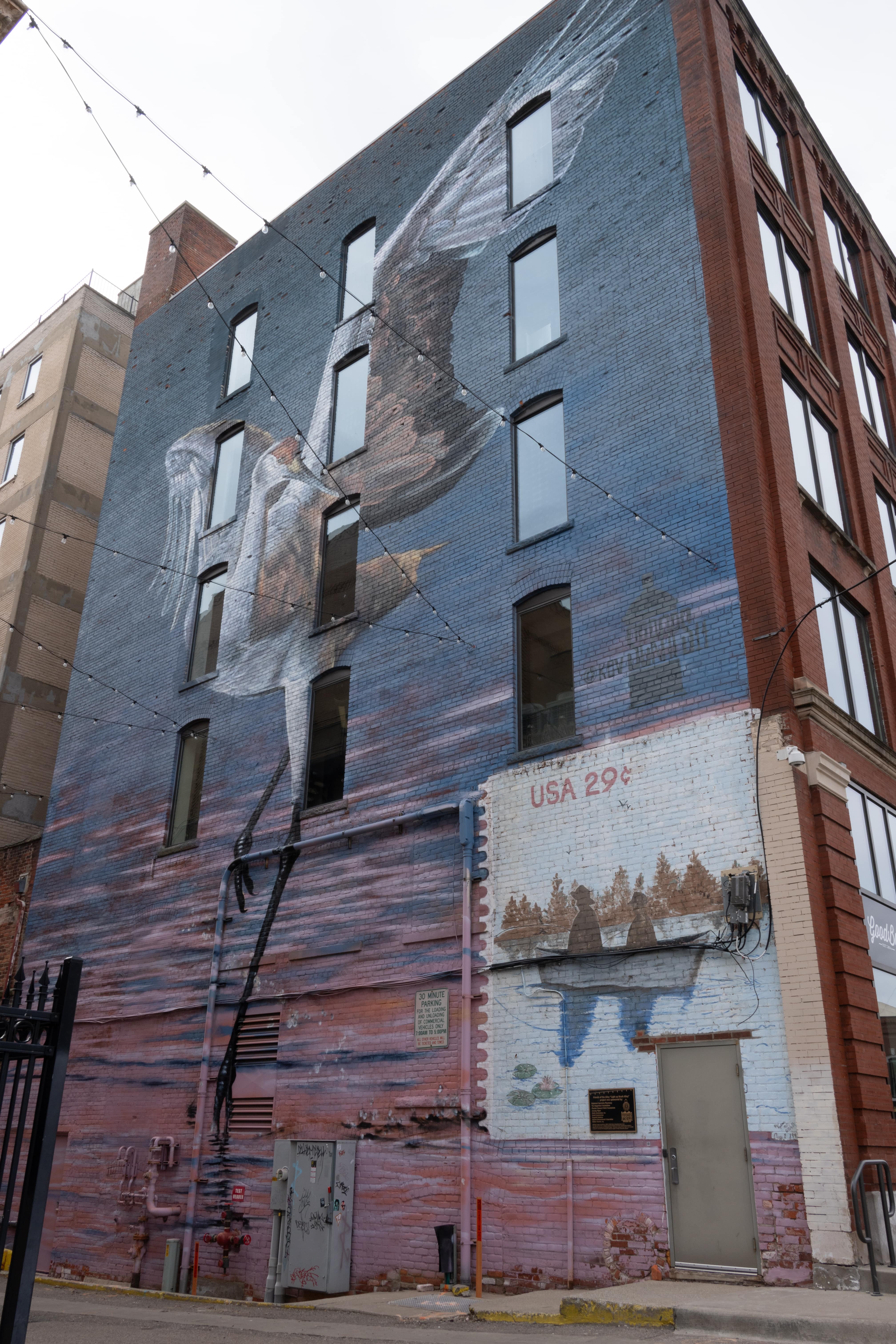
Errin Whitaker, life-long Flint resident, artist and muralist for the Flint Public Art Project, talked about the effect the water crisis had on him and his work.
“I think more of the work that I create now is reflective, introspective. Just because you don’t do things in the moment doesn’t mean that it’s not affecting you for years to come,” said Whitaker, whose first mural is on a wall off Fleming Road on the east side of Flint featuring a large owl that’s meant to symbolize wisdom.
Reverberations of the water crisis are still felt throughout the city. The effects of lead are irreversible, and there is nothing money or the government can do to change that.
“I would say we are still, to this day in 2025, dealing with the aftermath,” said Barber. “Lead does not go away. Those that consumed the water and were essentially infected with lead, they are going to have lifelong repercussions. There are scientific studies out there that will show that they will never be the same or have the original potential that they had before.”
As Flint moves into the future, its artist community is striving for it to be known for more than the water crisis and other sadnesses that have befallen its people. The word “resilient” is frequently used to describe those who live here.
“We are a community of different cultures that get along. We are happy. We are talented. We are resilient. We are survivors. We are thrivers. We are innovators,” said Branch. “That’s how we want to be seen. We want to be seen as taking our power back and not waiting for someone to give us anything, but snatching it from the Jaws of Life.”
